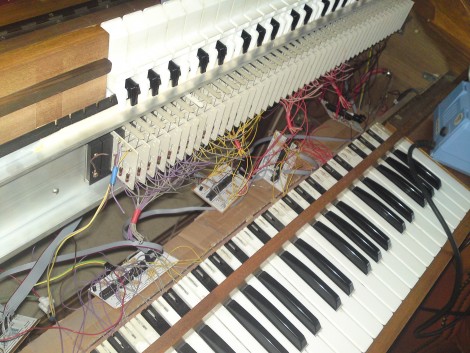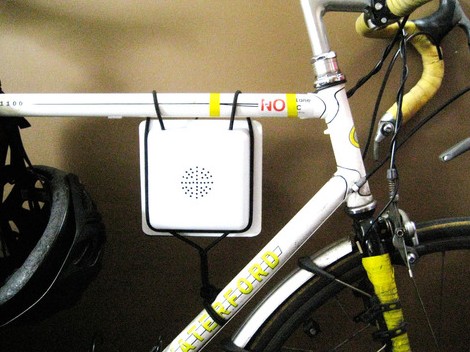This thrift shop organ gets a new life as an 8-bit music maker. Called the Chipophone, it relies on an ATmega88 to produce sounds that you might associate with classic video gaming. [Linus Akesson] takes us through all of the different sound settings in the video after the break, including performances of your theme music favorites.
The original organ uses transistor logic making it rather easy to patch into the hardware. Thanks to the build log we know that [Linus] used 74HC165 input latches to monitor each of the switches for the 120 inputs. Fifteen of these latches work like a backwards shift register 74HC595, cascading all of the parallel inputs into one serial signal. From there the microcontroller takes over, monitoring the keys, pedals, switches, and potentiometers and outputting the appropriate sounds.














